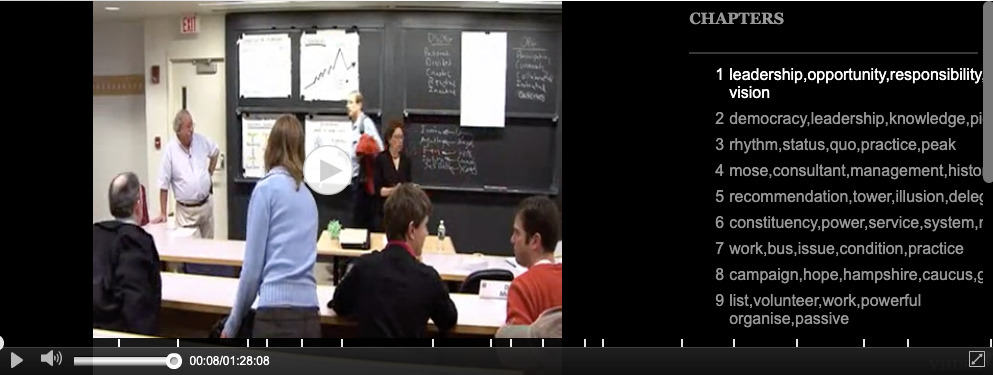
Distributed Leadership in the Obama Campaign, March 19 2009 – MIT World Series: Sloan Innovation Period (SIP) (Video)
In this video Marshall Ganz discusses organizing and distributed leadership in the Obama campaign.
Introduction
“The Obama campaign owes its victory not to a single charismatic candidate, but to the efforts of a disciplined and motivated organization whose roots go back to landmark movements of the 1960s. Marshall Ganz, who cut his teeth on civil rights work and with Cesar Chavez’s United Farm Workers, describes how the principles and practices he learned around organizing and leadership played out in the most recent presidential election.
For Ganz, our time represents the end of “40 years of wandering in the desert,” the end of “the politics of disappointment.” We’ve arrived at an extraordinary moment of rapid change — a time of both possibility and uncertainty — with commensurate challenges to political leaders. But Ganz’s take, after years with progressive movements, is that leadership involves “taking responsibility to enable others to achieve purpose in the face of uncertainty.” Leaders recruit, motivate and develop others, constructing a community around common interests, and building capacity from within the community. And unlike businesses, which tend to rely on rigid hierarchies, and systems and procedures, effective volunteer-based organizations must engage and enable lots of people to become innovators, adaptive in the face of uncertainty.
This kind of “civic capital” is precisely what the Obama campaign cultivated and invested in, says Ganz. Thousands of people acquired the skills and practiced “the arts of leadership necessary to self govern in democracy.” Some unique conditions made this campaign so successful, including Obama’s story of hope, which drew on a persuasive personal narrative. There was also the campaign’s strategy of developing grassroots capacity to win caucuses and close primaries; its use of the Internet to attract an army of small-scale, repeat contributors; and its capacity for “continual learning” about what was and was not working.
In the summer of 2007, Ganz served as counselor in LA’s “Camp Obama,” teaching key state organizers to share personal narratives and create compelling politics around human experience and emotion, rather than around issues. He led workshops on motivating from “a place of hopefulness,” rather than of fear, and on how to build from common ground to shared political values and commitments. Obama staffers and volunteers learned how to create mutually reliant leadership teams that could act independent of the campaign HQ; and how to amass and utilize voter information both to get out the vote, and to tap additional volunteers. A “cascade of training and leadership development” led to a massive field organization that built upon itself, where volunteers continually joined and moved up the ranks, and everyone felt “they owned a piece of it.”
Source – http://videolectures.net/mitworld_ganz_leadership/

